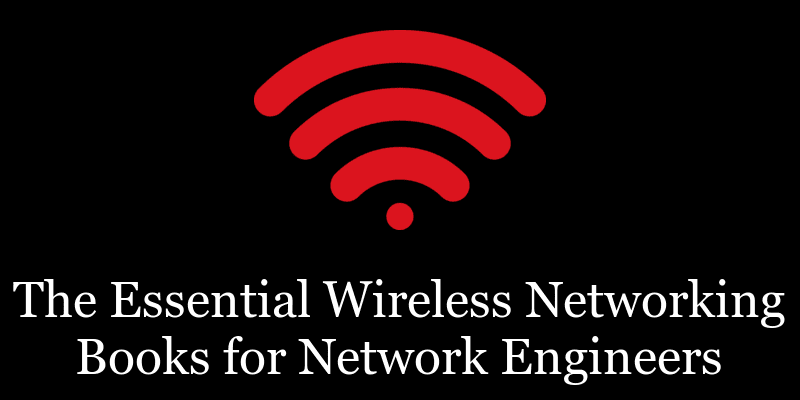The Essential Wireless Networking Books for Network Engineers

Solutions Review compiles the most essential books on wireless networking that any network engineer needs to add to their reading list.
Are you a network engineer or IT professional that focuses on wireless networking? Books, whether hardcover or digital, are an excellent source for people looking to learn about a specific field of technology, and wireless networking is no exception. We’ve listed the top wireless networking books that you should add to your reading list. These books are intended for beginners and experts alike and are written by authors with proficiency and/or recognition in the field of wireless networking.
If you’re looking for resources on network monitoring, our free Network Monitoring Buyer’s Guide has you covered. It contains profiles on the top network monitoring providers in the market today, including descriptions of the tools they offer and noteworthy features of each. The guide also features 10 questions you should ask prospective vendors and yourself before buying a network monitoring solution. You can check out that guide here!
802.11 Wireless Networks: The Definitive Guide
“With wireless technology, the advantages to its users are indeed plentiful. Companies no longer have to deal with the hassle and expense of wiring buildings, and households with several computers can avoid fights over who’s online. And now, with 802.11 Wireless Networks: The Definitive Guide, 2nd Edition, you can integrate wireless technology into your current infrastructure with the utmost confidence.”
Computer Networking: The Complete Guide to Understanding Wireless Technology, Network Security, Computer Architecture and Communications Systems (Including Cisco, CCNA and CCENT)
“Are you pursuing a field that requires at least some knowledge of computer networking? Do you wish to learn about the future of networking and how electronics function? If this is true, then this is the guide for you. While other shorter books do not include ALL concepts, this book dives deep into the subject matter so that nothing is left out. Beginners, intermediate learners and advanced users have all learned from this guide. The book is designed to be an easy read that simplifies concepts as much as possible.”
Designing and Deploying 802.11 Wireless Networks
“Geier organizes each phase of WLAN deployment into clearly defined steps, making the entire planning and deployment process easy to understand and execute. He illuminates key concepts and methods through realistic case studies based on current Cisco products while offering tips and techniques you can use with any vendor’s equipment. To build your skills with key tasks, you’ll find several hands-on exercises relying on free or inexpensive tools.”
Mobile and Wireless Networks
 by Khaldoun Al Agha, Guy Pujolle, and Tara Ali Yahiya
by Khaldoun Al Agha, Guy Pujolle, and Tara Ali Yahiya
“This book presents the state of the art in the field of mobile and wireless networks, and anticipates the arrival of new standards and architectures. It focuses on wireless networks, starting with small personal area networks and progressing onto the very large cells of wireless regional area networks, via local area networks dominated by WiFi technology, and finally metropolitan networks. […] 5G is also discussed in order to show what can be expected in the near future.”
Security in Wireless Mesh Networks
 by Yan Zhang, Jun Zheng, and Honglin Hu
by Yan Zhang, Jun Zheng, and Honglin Hu
“Wireless mesh networks (WMN) encompass a new area of technology set to play an important role in the next generation wireless mobile networks. WMN is characterized by dynamic self-organization, self-configuration, and self-healing to enable flexible integration, quick deployment, easy maintenance, low costs, high scalability, and reliable services. To achieve these aims, security mechanisms are essential to ensure trusted on-going communications.”
Wireless and Mobile Device Security
“Written by an industry expert, Wireless and Mobile Device Security explores the evolution of wired networks to wireless networking and its impact on the corporate world. Using case studies and real-world events, it goes on to discuss risk assessments, threats, and vulnerabilities of wireless networks, as well as the security measures that should be put in place to mitigate breaches.”
Wireless Communication Networks and Systems
 by Corey Beard and William Stallings
by Corey Beard and William Stallings
“Wireless Communication Networks and Systems covers all types of wireless communications, from satellite and cellular to local and personal area networks. Organized into four easily comprehensible, reader-friendly parts, it presents a clear and comprehensive overview of the field of wireless communications. For those who are new to the topic, the book explains basic principles and fundamental topics concerning the technology and architecture of the field.”
Wireless Network Administration: A Beginner’s Guide
“Configure, manage, and secure wireless networks using the step-by-step details in this practical resource. Wireless Network Administration: A Beginner’s Guide shows you how to work with the latest wireless networking standards, including the 802.11x family, on Windows, Mac, and Linux platforms. The book covers wireless network planning, design, hardware, services, protocols, device configuration, security, troubleshooting, and more. This hands-on guide will get you started administering wireless networks in no time.”
Wireless Networking: Introduction to Bluetooth and WiFi
“‘Wireless Technologies: An introduction to Bluetooth and WiFi’ starts from the ground up for a new user and does a gradual progression into the technical details around wireless communications. There is also a deep dive into two of the most widespread wireless technologies – Bluetooth and 802.11 WiFi. […] Bluetooth and WiFi have dramatically altered how people use devices to connect and communicate in everyday life. Bluetooth is a low-power, short-range technology for ad hoc cable replacement; it enables people to wirelessly combine devices wherever they bring them.”
Solutions Review participates in affiliate programs. We may make a small commission from products purchased through this resource.


























